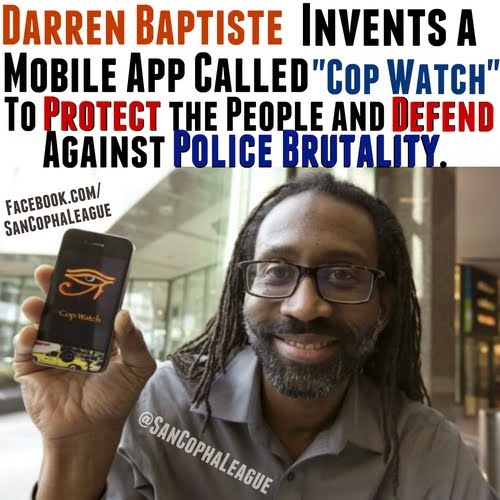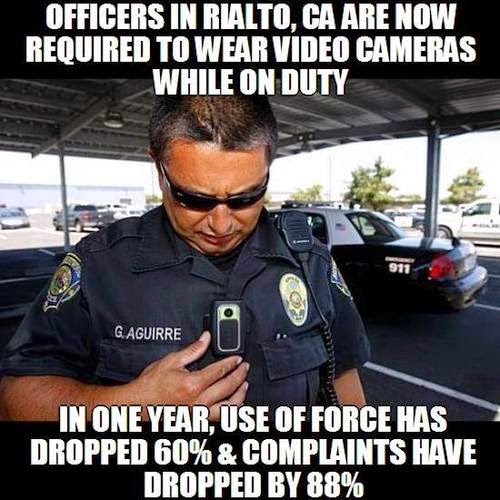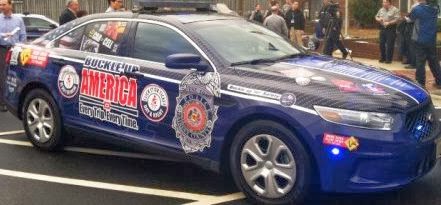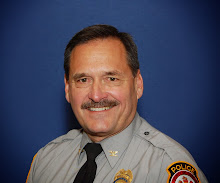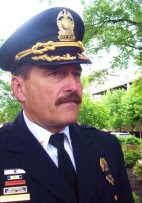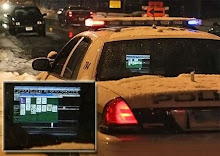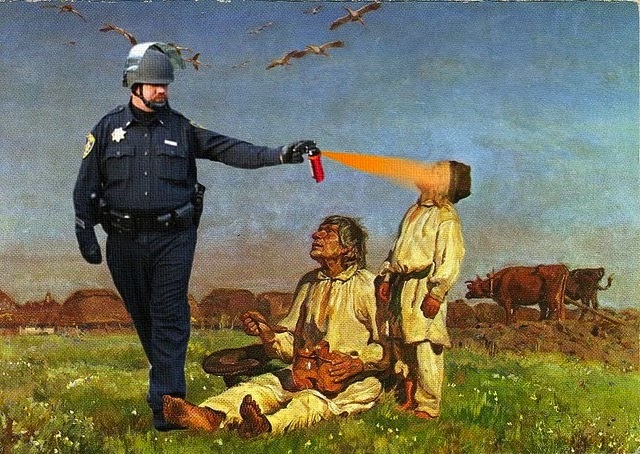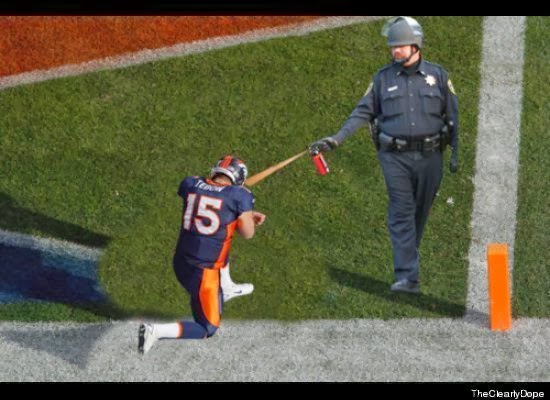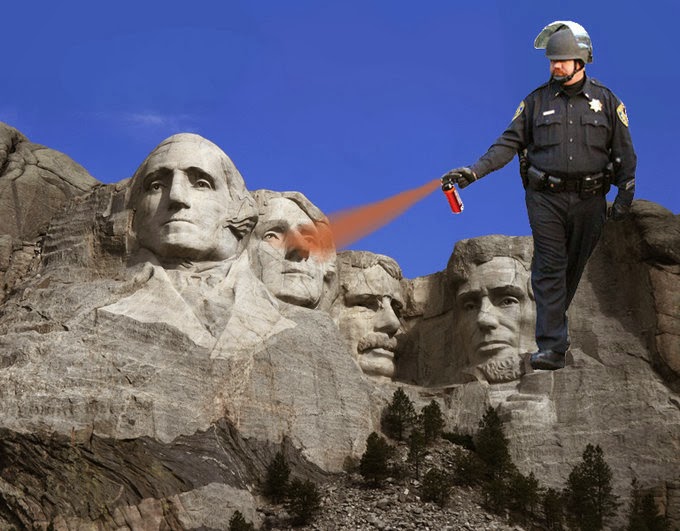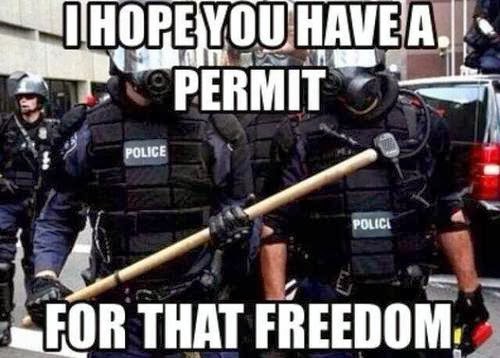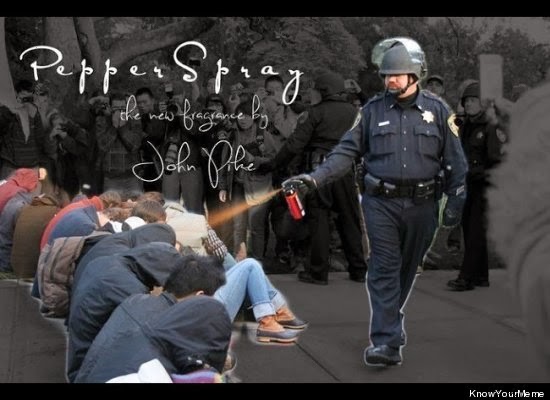But why did they assault the cops? Could it have anything to do with the punk attitude by Fairfax County police that provokes this sort of thing?
Fairfax Co. police see
assaults on officers rise, assaults by officers fall
WASHINGTON — Fairfax County police has made its internal “Use of Force” report public, which reveals an
unexpected uptick in assaults on officers.
Fairfax County police Chief Edwin C. Roessler released the
department’s 2016 internal “Use of Force” report, calling attention to a rise
in assaults on police officers. His decision to publish the data on officer
assaults was prompted by a request, he said.
“My officers asked I publish the data to be absolutely
transparent that we just not report our use of force but the use of force
committed against us at the same time,” he told WTOP.
The report states simple assaults on police officers at
132 in 2016 with 11 aggravated assaults. One officer was nearly killed that
year, resulting in an attempted capital murder charge.
Of the more than 460,000 interactions between officers and
the community, officers used force in 500 of them, which works out to .01
percent of the time.
“We’ve already surpassed, in 2017, the total number of
assaults on police officers that we tracked in 2016,” Roessler said.
He pointed out that if a citizen resists arrest and uses
force on an officer, the incident will count as a use of force on both sides of
the interaction.
“The majority are our officers being assaulted is the
person resisting us through pushing away and physical force, and we have to use
force to make the arrest,” he said.
According to the report, use of force by police officers
fell by 31 instances between 2015 and 2016.
FCPD body camera pilot to launch in 2018
A thug is a thug. They don’t change because they can’t change. So this
is what will happen. These killers will wear body cameras for the allotted
time, they’ll say the cameras didn’t make a difference etc and their mouthpiece
Sharon “Show me the money” Bulova will swear to it and the camera will be gone.
Watch and see.
By Angela Woolsey/Fairfax County Times
The Fairfax County Board of Supervisors unanimously approved a proposed
pilot program for police body-worn cameras at its Nov. 21 meeting, a move that
county elected officials and law enforcement hope will increase transparency
around police-citizen interactions.
Scheduled to start in early 2018, the pilot will provide 230 cameras to
uniformed patrol officers at the Fairfax County Police Department’s (FCPD)
Mount Vernon and Mason District stations for three months, though the
department has the option to extend it to six months.
“The pilot program for police body cameras…is yet another example of
Fairfax County’s commitment to supporting transparency and police
accountability,” Board of Supervisors Chairman Sharon Bulova said. “I am proud
of our Police Chief Ed Roessler and his team for working to carry out the
pilot, which entailed extensive upfront research and will include training for
police officers at the Mason and Mount Vernon District Stations.”
The county’s implementation of a body-worn camera pilot takes the FCPD
one step closer to fulfilling another one of the 202 recommendations from the
Ad Hoc Police Practices Review Commission, which Bulova assembled earlier that
year in response to public outcry over the county’s handling of a fatal
officer-involved shooting in 2014.
The commission’s report, which was published on Oct. 8, 2015,
recommended a mandate that all FCPD patrol officers “employ body cameras to
record all interactions with members of the public.”
Fairfax County previously considered using body cameras in 2015 after
the Police Executive Research Forum (PERF) and U.S. Department of Justice’s
Community Oriented Policing Services (COPS) released a report in 2014 on best
practices for establishing a police body camera program.
Using the 2014 report and community feedback, Roessler presented a
proposal to the Board of Supervisors’ public safety committee on June 9, 2015,
but the board decided to wait before taking any action.
Roessler says that his 2015 proposal was for a full program for the
entire police department, rather than a pilot. It carried an estimated start-up
cost of $8 million and recurring annual costs of $4 million, while also
requiring the addition of eight full-time positions.
Since then, more vendors have started offering body-worn cameras, so the
equipment and related storage costs have become cheaper.
The past couple of years have also given the FCPD time to observe how
body-worn camera programs in other police agencies around the U.S. have
progressed, providing better insight into how a potential program should be
implemented.
“It made prudent sense to do a pilot project, because today, you truly
cannot understand the costs of the entire program,” Roessler said. “…We’ve
learned a lot of lessons from [other agencies], where you can’t just buy these
cameras and employ them. You have to test out the IT infrastructure and then
the data storage costs, so that’s our intent.”
The Board of Supervisors public safety committee agreed to let Roessler
start a request for proposal (RFP) process for possible vendors at its Dec. 13,
2016 meeting.
The RFP ultimately went to the technology company Axon, which will
provide the cameras, software, and storage for the pilot program at no cost to
Fairfax County.
According to the FCPD, there will still be some expenses associated with
the pilot, which has a projected start-up cost of $684,151 for the Fiscal Year
2018, mostly to cover the hiring of personnel needed to provide technical
support and manage digital evidence and records.
It will also cost approximately $8,000 to enhance the power and network
access required at both of the stations involved in the pilot.
The first three years of storage for evidence collected during the
90-day pilot will be covered as part of a field trial agreement with Axon, but
data storage after that will cost $124,000 annually starting in Fiscal Year
2021.
If the pilot is expanded to 180 days, the cost of data storage would
increase.
Given those expenses, Roessler says the pilot will be a key test to see
whether body cameras are actually effective tools for achieving their intended
goals, which are to reduce the use of force by officers and decrease the number
of citizen complaints against officers.
“Clearly the body-worn cameras will round out the best practices of
accountability, but we’re going to have to balance maintaining staffing levels
and paying benefits,” the FCPD chief said. “The cost of this is a big
challenge.”
In order to determine the effectiveness of both the cameras and policies
implemented to govern their use, Fairfax County police have partnered with
American University professors Richard R. Bennett and Brad Bartholomew to
conduct a 270-day-long analysis of the pilot.
A study of the Metropolitan Police Department’s body camera program
found that the devices had no discernible impact on citizen complaints or
officers’ use of force.
The Washington, D.C., agency, one of the largest in the nation, deployed
2,600 cameras starting in December 2016 as part of its $5.1 million program.
Released on Oct. 20, the report by the city government group, The Lab @
DC, called into question the belief that implementing body cameras would prompt
significant behavioral changes in policing.
Roessler says that Bennett and Bartholomew have analyzed that study,
along with a similar one done in Boston, Mass., in order to find ways they
could potentially improve upon them when looking at Fairfax County.
“My challenge to the professors [was] what are the gaps that you see
from an academic perspective to where I, as the chief, could make sure my
policies provide a greater randomization sampling of all the nuances of how
body-worn cameras work?” Roessler said.
The two researchers are currently in the process of gathering data about
use-of-force incidents and complaints lodged against officers so they can have
a point of comparison when the pilot program starts.
The pilot is expected to officially launch within 100 days of the Board
of Supervisors’ Nov. 21 vote, since the department needs time to train
officers, install information technology, and hire temporary civilian employees
to provide technical support, process evidence, and handle Freedom of
Information Act (FOIA) requests for the recordings generated by the body
cameras.
In approving the funding and implementation of the body camera pilot,
the Board of Supervisors also gave the police department permission to follow a
model policy for how the equipment and data will be used and stored.
The policy, which can be found in draft form on the Board of
Supervisors’ committee meetings website under Oct. 10, is the culmination of
research and discussions that the FCPD has been conducting with a group of
community stakeholders, including mental health advocates and civil rights
groups, since 2014, according to Roessler.
Officers equipped with body-worn cameras must wear them outside their
uniform or vest on a full-time basis, and they will be expected to activate the
device during any public encounter related to a call for service or law
enforcement action, including subject and traffic stops.
Officers should start recording when they arrive on the scene, or as
soon as it is practical and safe to do so, and leave it on for the duration of
the incident, including the transportation of an individual to a detention
facility.
The policy prohibits officers from intentionally obstructing their
body-worn camera or avoiding recording a police incident.
Officers can record citizens in public areas or in a private residence
if they have legal authority to be there, but individuals can opt not to be
recorded unless it is necessary for an ongoing criminal investigation, arrest,
or search.
Body cameras must be deactivated in state, federal, and local
courthouses as well as medical or mental health facilities unless a
use-of-force incident is expected or occurs.
The policy instructs officers not to use their cameras to make
surreptitious recordings of other law enforcement personnel, to record detailed
statements in alleged rape or sexual assault cases, or to conduct Lethal
Assessment Program (LAP) assessments, which are used to determine risk factors
when responding to the scene of a domestic violence-related incident.
The cameras are also not to be used when communicating tactical and
strategic plans, meeting with undercover officers and confidential informants,
appearing before a magistrate, or engaging in personal or administrative
activities.
Officers should not activate their body-worn camera when community members
report a crime and request anonymity, or in restrooms and locker rooms.
While this is the policy that will be implemented at the start of the
pilot, Roessler and the stakeholder group from 2014 will meet to monitor how
the existing policy is working, and they have the ability to alter it
throughout the duration of the pilot program.
“It’s going to be a live document,” Roessler said. “…If we missed
something and need to enhance the policy, I shall enhance the policy
immediately to maintain compliance. I will make sure we hold ourselves to the
highest standard of accountability that we can.”
Subscribe to:
Posts (Atom)


